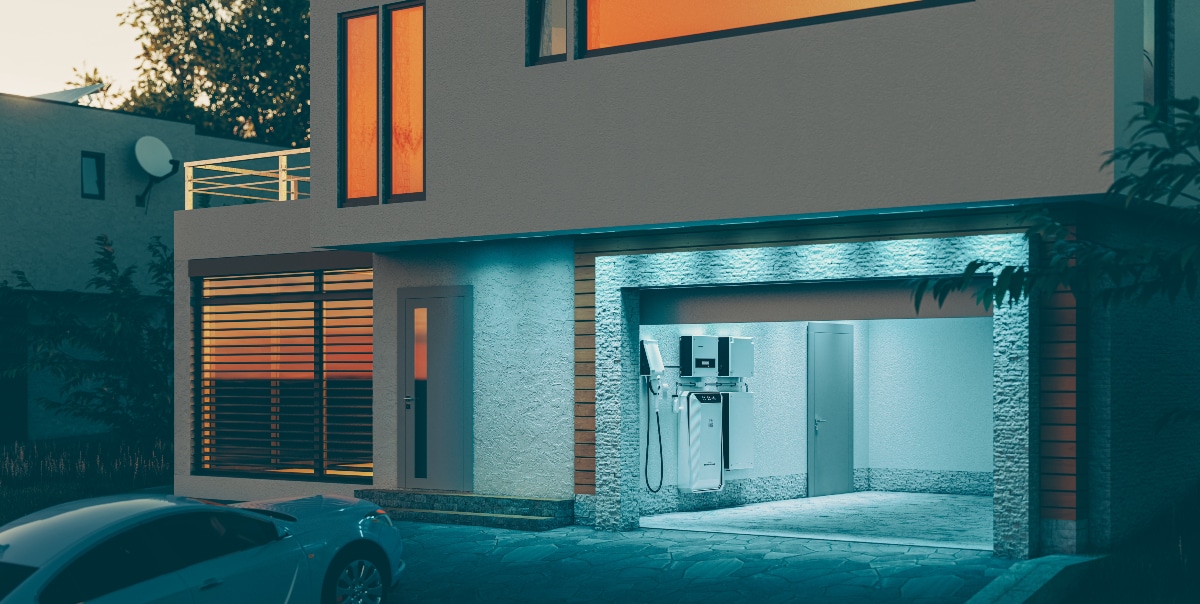The Future of the Grid is Going Nano

4 Min. Read
If you want to power a single home or building, you might consider using nanogrids, which are small electrical networks designed to power a single home or building. As electrification increases, switching to local infrastructure is a solution that would make sense for many homeowners and businesses.
In this blog post, we will learn what nanogrids are, the benefits they offer, and the solutions they provide.
What is the grid?
The grid is the infrastructure that brings electricity from where it is produced to where it is used. Until recently, efficient and economical energy production was only possible with centralized power plants like coal-fired plants. Centralized plants power all the homes and businesses in a large area and are linked to other power stations nationwide. This aging grid will face more hurdles as climate change and technological advances tax an already over-burdened and out-of-date system. For example, as temperature increases, the efficiency of electrical transmission decreases. Climate change also affects our weather, creating more severe storms and wildfires that threaten to knock out power lines, substations and power stations. Moreover, new technology increases electricity demand as we power more devices like electric stoves, heaters and even electric vehicles (EVs).
What is a nanogrid?
Renewable energies such as solar allow home or business owners to produce their power on-site. By adding energy storage capacity, owners can also save energy for later use. These technologies will enable the creation of a nanogrid, a single building powered by its own generation and not reliant on the wider grid. This does not prevent you from connecting to a larger grid. For instance, nanogrids can connect to a larger grid and benefit from having a larger generating station to power more energy-intensive needs.
The benefits of a nanogrid
Being energy self-sufficient offers multiple benefits. When you are no longer dependent on the grid, increasing local utility costs don’t affect you as drastically. You also gain resiliency from blackouts and brownouts. For example, when the local grid has issues, your system takes over. The power produced from your solar system and stored in your batteries can keep your home or business running. In addition, some utilities will pay home and business owners for the use of the power stored in their batteries to help with the needs of the larger grid.
You also gain control of where your energy comes from. You can use solar and other clean, renewable technologies instead of dirty power from fossil fuel sources. Fossil fuels are a leading cause of climate change and, according to the U.S. Energy Information Administration, make up over 60% of the energy produced in the U.S.
You can further future-proof yourself by switching to an EV, which you can charge with the solar on your roof, eliminating your reliance on increasingly expensive gasoline. Additionally, newer technologies are emerging that will allow you to use your EV’s battery to supplement your at-home energy storage and power your home in case of a grid disturbance.
Nanogrids to microgrids
In areas that cannot be connected to the national grid or in places like island towns where that connection is unreliable, a “microgrid” is built to power the town’s needs. Like the larger grid, microgrids share resources among a small group of buildings. These resources can be centralized with a small power station or distributed with connected nanogrids. In this case, both the generation and storage resources work together to serve the community. For instance, if you cannot generate enough power for your current use (and your storage cannot compensate on its own), you can use power generated or stored at another location for that time. The reverse is also true, where others in the microgrid can use your energy.
Growing interest
The many benefits of nanogrids are attracting home and business owners interested in making this transition. These consumers see the financial value of solar plus storage that reduces or even eliminates utility payments for electricity. Owners are also drawn to the stability and independence of producing and storing their own power and reduced susceptibility to power outages.
If these reasons were not enough, consider the benefits of stemming climate change and how we navigate this changing environment. Our current power generation models add carbon dioxide and other greenhouse gases to the atmosphere and further global warming. The scientific community has strongly warned of the consequences of not reducing these emissions. Experts see the path forward as electrification with renewable energies.
Nanogrids are the solution
A significant part of the solution to our grid’s aging infrastructure and the effects of climate change will be incorporating nanogrids into the mix in a big way. The nanogrid approach offers the most flexible option, allowing its use as a stand-alone, self-sufficient building or as part of a microgrid or macrogrid. As a result, nanogrids reduce the stresses on the existing grid while shifting to a cleaner form of power.
Qmerit can help
Qmerit’s network of Certified Installers knows the best practices for powering your home or building. We can guide you through the process to ensure success in power solutions. For more information, contact us.
